PULP FICTION (1994)
The lives of two mob hitmen, a boxer, a gangster and his wife, and a pair of diner bandits intertwine in four tales of violence and redemption.
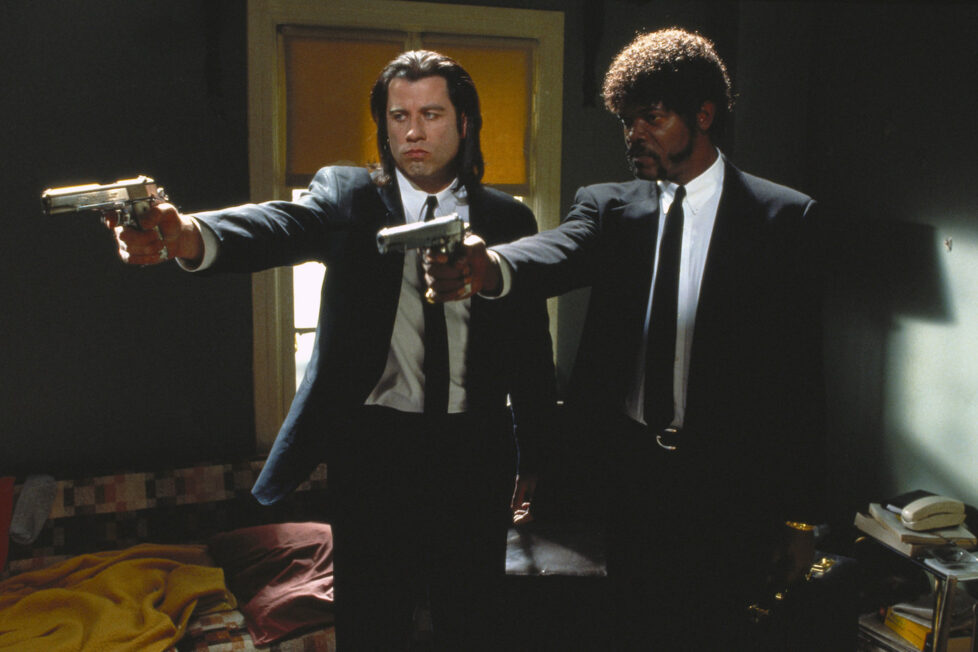
The lives of two mob hitmen, a boxer, a gangster and his wife, and a pair of diner bandits intertwine in four tales of violence and redemption.


Inspired by Mario Bava’s horror anthology Black Sabbath (1963), Quentin Tarantino and his friend Roger Avary shared writing duties for a screenplay intended to become a three-part short called Black Mask. They soon realise nobody was producing short films in the early-1990s, so Tarantino expanded his own story into what became Reservoir Dogs (1992) and Avary’s “Gold Watch” tale formed part of what became Pulp Fiction. Following the success of Reservoir Dogs, audiences and critics alike were keen to see what this exciting new filmmaker would do next, so Tarantino and Avary holed themselves up in Amsterdam’s Red Light District and blended their ideas into a trio of crime stories intended to subvert the genre’s tropes and cliches.
The resulting screenplay for Pulp Fiction was described as “too demented” by TriStar Pictures’ CEO after he read it, but Tarantino’s producer Lawrence Bender brought it to the more open-minded Miramax. It became the first movie the independent studio completely financed themselves for £8.5M. And once Bruce Willis (Die Hard) signed on to star, his celebrity status guaranteed Miramax $11M from global distribution deals, meaning Pulp Fiction turned a profit before a single ticket had been sold.
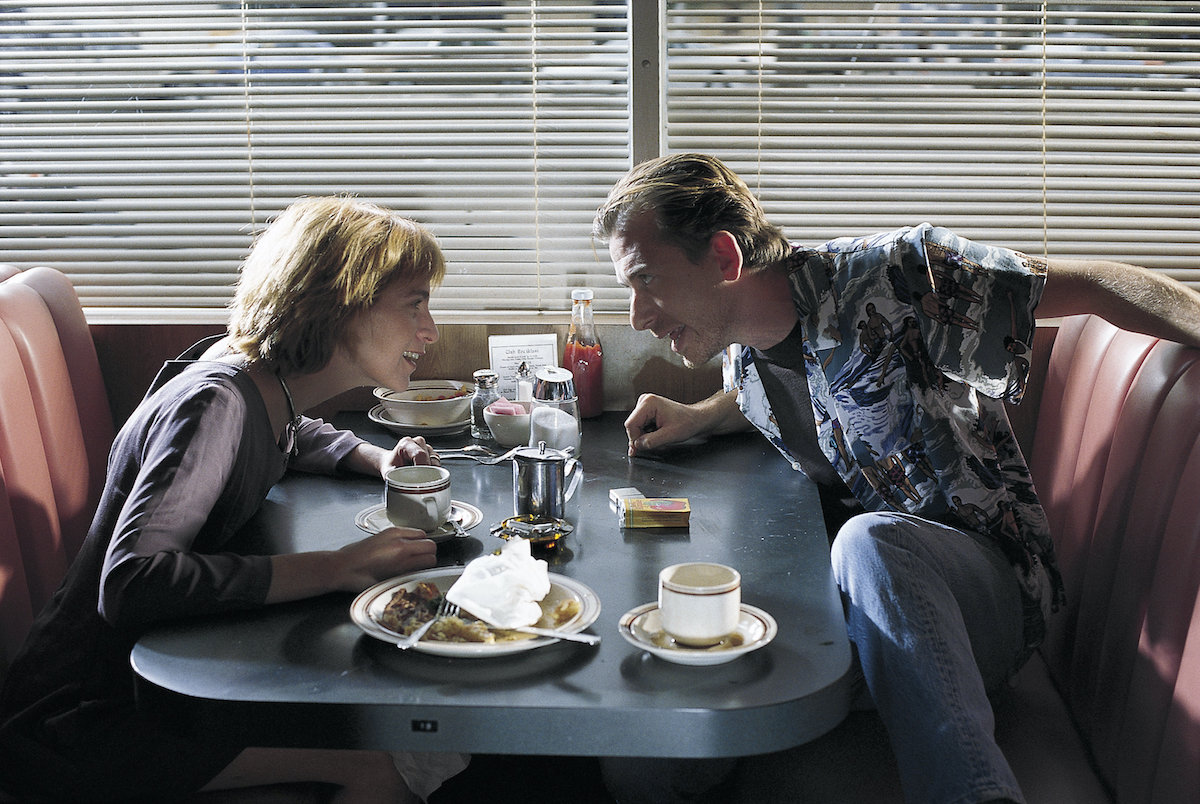
Pulp Fiction is the perfect follow-up to Reservoir Dogs because it exists in the same genre and even takes place in the same world (John Travolta’s character was later confirmed to be the brother of Michael Madsen’s Mr Blonde from Dogs), but is considerably more ambitious and showcases Tarantino’s skills to an even greater extent. It was shot on 50 ASA film stock to produce an image with almost no grain, intended to evoke 1950s Technicolor and thus make the movie look and feel twice as expensive. The costliest set was the Jack Rabbit Slim restaurant, built for $150,000.
Similarly to Dogs, the narrative of Pulp Fiction is non-linear but takes that novelistic approach further than having flashbacks add context to current events. The film is broken down into seven ‘chapters’ (including the Prologue and Epilogue), which tell three distinct stories that are interconnected in unexpected ways. So much so that one major character dies halfway through, but returns in subsequent scenes set before his demise. Each of these stories is a brilliant example of Tarantino’s technical mastery and genre knowledge, plus his talent for casting actors who are perfect for their roles. Dogs made stars of a number of up-and-comers, with Harvey Keitel the only truly recognisable face at the time, but Pulp involved more famous faces drawn to the project (Christopher Walken, Amanda Plummer, Rosanna Arquette), as well as others whose careers skyrocketed after appearing in the movie (Uma Thurman, Ving Rhames, Samuel L. Jackson). But this was definitely the first time Tarantino chose to revive a washed-up Hollywood star’s career, by casting John Travolta as hitman Vincent Vega. Travolta was best known for singing and dancing roles in Saturday Night Fever (1977) and Grease (1978), but his career had waned in the 1980s and by the mid-’90s younger filmgoers were probably more aware of him from Look Who’s Talking? (1989) and its sequels. Few would have seen Travolta as a laconic killer waxing lyrical about foreign fast food, but Pulp Fiction turned his fortunes around and started a trend for Tarantino giving forgotten actors a valuable opportunity for a comeback.
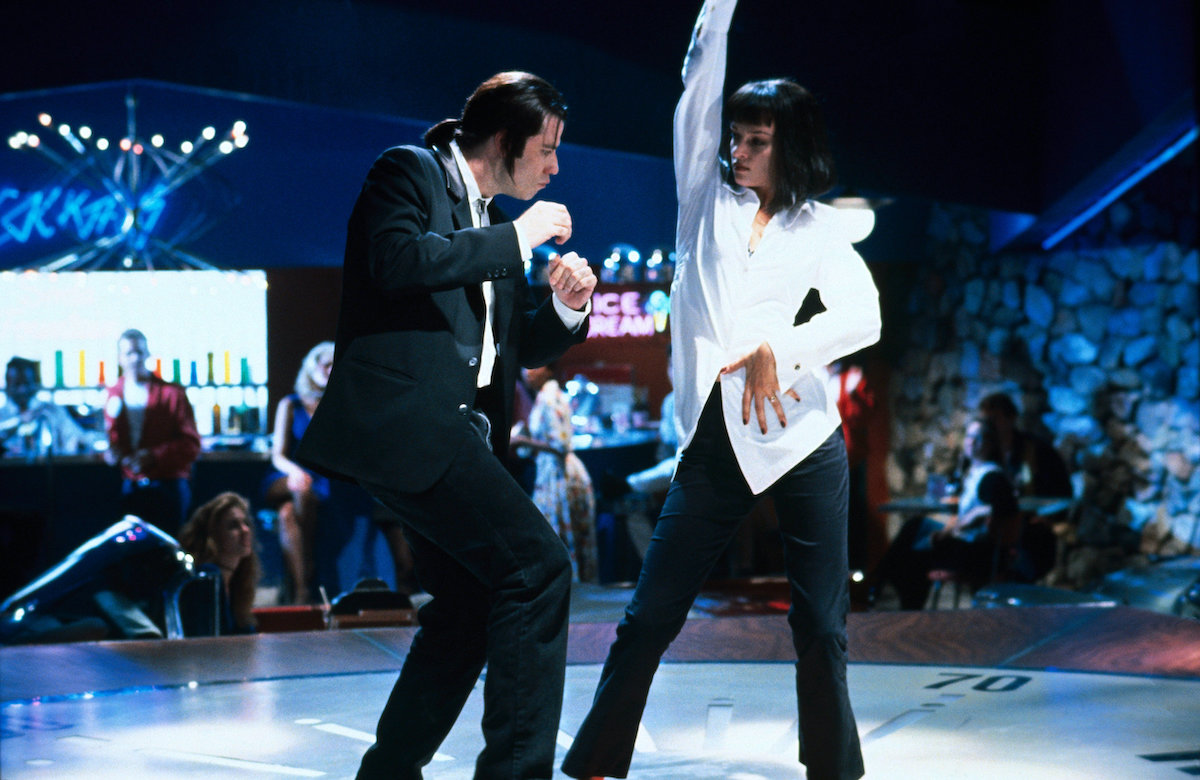
The curse of anthology-style movies is there’s usually one or two tales that aren’t as strong as the others, but Pulp Fiction bucked this trend. It helps that each story isn’t entirely separate, as they’re more like subplots with unclear connections until ‘Character A’ wanders into the events of ‘Plot B’. But even if you separate them in your mind, there are no outright duds it’s a struggle to sit through. The best story is “Vincent Vega and Marsellus Wallace’s Wife” and its prelude, where we meet affable hitmen Jules Winnfield (Jackson) and Vincent Vega (Travolta) going about their day, talking about fast-food and foot massages, in a manner that instantly endears them to us as quirky friends…
Then we’re reminded they’re professional killers and have a conflicting reaction once they viciously gun down a frightened young man called Brett (Frank Whaley) who double-crossed their boss Marsellus (Rhames). It’s a common trait of Tarantino’s writing that he humanises despicable men by having them behave and talk like ordinary folk, so even when Jules and Vincent re-enter the story we’ve somehow forgotten they’re callous murderers and are again drawn to the positive aspects of their characters: Vincent proves to be a charming host when taking his boss’s wife, Mia (Thurman), out for an evening of dining and dancing, before being thrust into a life-and-death situation after she overdoses and needs a shot of adrenaline to the heart; and Jules has a spiritual awakening that makes him choose a less violent way to end a tense restaurant robbery by ‘Pumpkin’ (Roth) and his twitchy girlfriend ‘Honey Bunny’ (Plummer).
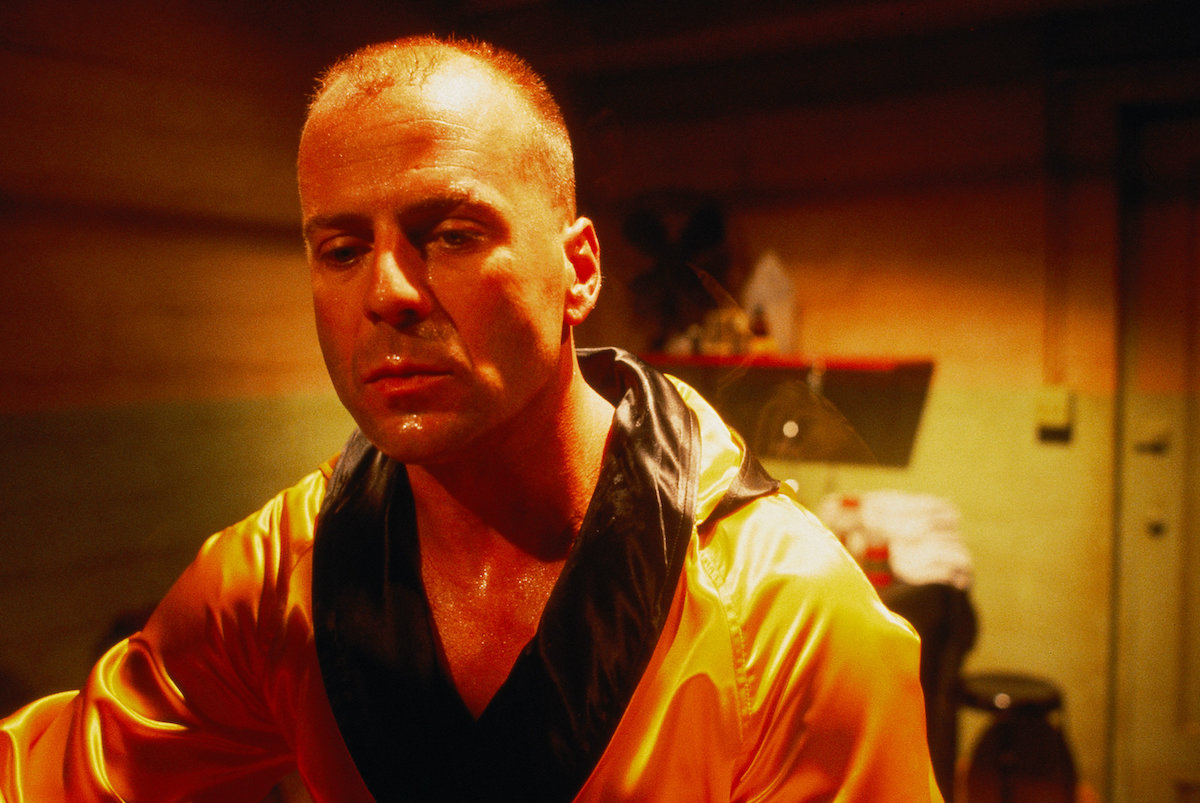
The second-best story is “The Gold Watch”, where ageing boxer Butch Coolidge (Willis) decides against throwing a fight for Marsellus, instead winning the bout and going on the run with his girlfriend Fabienne (Maria de Medeiros). Matters are complicated when Butch crosses paths with Marsellus at a crosswalk mid-escape, and two pawnshop rapists capture them after they take shelter during the ensuing gunfight. This storyline arguably contains the most memorable sequence of Pulp Fiction, clearly inspired by Tarantino’s love of Deliverance (1972), when macho Marsellus is sexually abused by slim hillbilly Zed (Peter Greene) before Butch redeems himself by coming to the crime boss’s aide armed with a katana.
There’s barely a scene in Pulp Fiction that doesn’t contain some indelible image (like the “gimp”) or memorable lines of dialogue, often delivered by actors relishing the chance to sink their teeth into the script. Despite being a much bigger film than Reservoir Dogs that’s able to stage larger set-pieces and have more locations and actors, the fundamental beauty of Pulp Fiction comes from the writing and how these characters and their stories keep you gripped every second. I’ve seen the movie numerous times over the decades, but I still hold my breath when Vincent’s about to punch a hypodermic needle through Mia’s breastplate… or feel the tension when Butch’s hand hovers into view to push open a door to reveal the ugly sight of Marsellus being sexually abused… or laugh at Walken explaining the backstory of Butch’s father’s pocket watch, which survived wars by being hidden up two people’s asses.
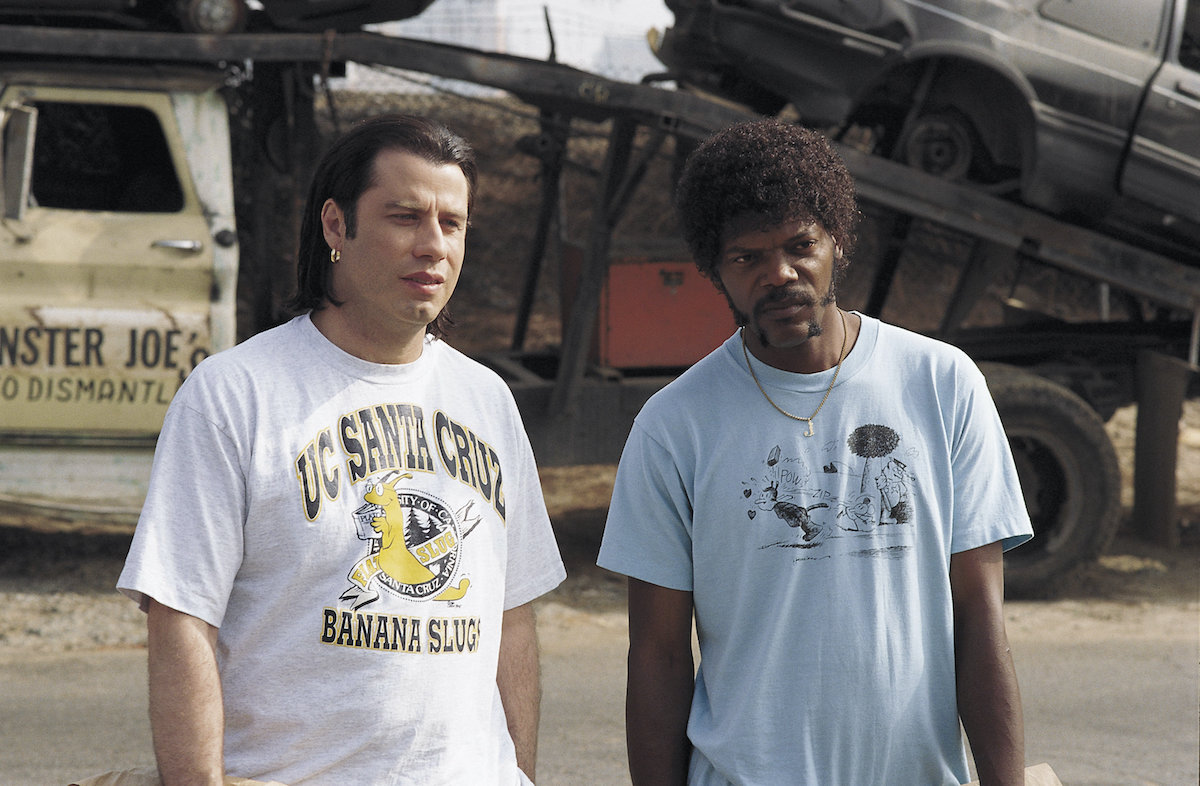
The film is such a confection of wild ideas and unforgettable characters, that it never gets boring to watch. It’s easy to see why the rest of the ’90s saw various writers and directors trying to mimic what Tarantino achieved here. It’s actually a shame Tarantino left contemporary crime films behind after his next film, Jackie Brown (1997), as everything since has leaned into more specific genres (kung fu movies with Kill Bill, war films with Inglourious Basterds), and/or has been a period piece (Django Unchained, The Hateful Eight, Once Upon a Time… in Hollywood).
Overall, Pulp Fiction was an enormous hit and grossed $213M worldwide. It was a huge influence on the decade’s filmmaking thanks to its unconventional structure and sparkling dialogue that every indie director wanted to imitate, and it remains Tarantino’s masterpiece. It won the Palme d’Or at the Cannes Film Festival, was nominated for seven Academy Awards (shamefully not winning any category), and time’s been incredibly kind to how it plays today.
USA | 1994 | 154 MINUTES | 2.39:1 | COLOUR | ENGLISH • SPANISH • FRENCH

Paramount Pictures bring Pulp Fiction to 4K with an excellent release in terms of picture quality, in particular. Much like the recent Reservoir Dogs 4K disc, this is another sterling effort that makes viewing the film seem like a fresh experience even after all these years. This is undoubtedly down to Tarantino’s use of 50 ASA film stock, which is intended to be used in bright daylight scenes but is here employed throughout to yield a fantastically grain-fee image that a 3840×2160/24p image makes the best of. The clarity of the image is incredible, while a Dolby Vision presentation really helps the colours pop when required. Flawless.
There’s no next-gen Dolby Atmos or DTX:X here, but the previously available DTS-HD Master Audio 5.1 is no slouch and does a great job with the dialogue, sublime needle drops, and instances of sound effects like shotgun blasts and restaurant atmosphere. The bass is rich and it’s an active aural experience that isn’t to be sniffed at.
The bonus material offers nothing new if you own a previous release on DVD or Blu-ray, but it makes for a fine selection of extras to delve into later.

director: Quentin Tarantino.
writer: Quentin Tarantino (story by Quentin Tarantino & Roger Avary).
starring: John Travolta, Samuel L. Jackson, Uma Thurman, Harvey Keitel, Tim Roth, Amanda Plummer, Maria de Medeiros, Ving Rhames, Eric Stoltz, Rosanna Arquette, Christopher Walken & Bruce Willis.
